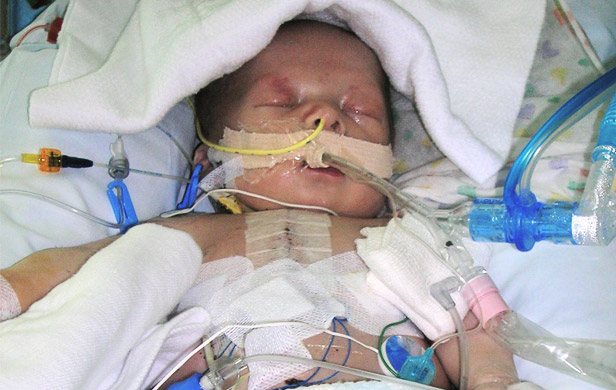Fracking tied to birth defects: Colorado study
- Details
- Published on Tuesday, 08 April 2014 14:20
- Written by editor
http://commonsensecanadian.ca/fracking-tied-birth-defects-colorado-study/
A new study, published last week in the scientific journal Environmental Health Perspectives, draws a correlation between birth defects and maternal exposures to natural gas.
After examining 124,842 births between 1996 and 2009 in rural Colorado, the study found a higher incidence of congenital heart defects (CHDs) and neural tube defects (NTDs) with infants whose mothers experienced higher exposures to natural gas.
The study (download pdf here) was led by researchers from the Colorado School of Public Health and Brown University, with support from The Colorado Department of Public Health and Environment (CDPHE). Born out of health concerns surrounding the growth of natural gas development throughout the US, it looked at health outcomes for children born of mothers who lived within a 10 mile radius of natural gas development in Colorado.
The researchers note that natural gas “emits several potential teratogens” – i.e. a substance which causes malformations. They suggest concerns around the health impacts of natural gas exposures are real and require more scientific study:
In this large cohort, we observed an association between density and proximity of natural gas wells within a 10-mile radius of maternal residence and prevalence of CHDs and possibly NTDs. Greater specificity in exposure estimates are needed to further explore these associations. According to the US-based Children’s Heart Foundation, “Congenital heart defects are the leading cause of all infant deaths in the United States,” with over 40,000 babies born every year, suffering from CHD.Congenital heart defects are the leading cause of all infant deaths in the US
ABSTRACT
Background: Birth defects are a leading cause of neonatal mortality. Natural gas development (NGD) emits several potential teratogens, and U.S. production of natural gas is expanding.
Objectives: We examined associations between maternal residential proximity to NGD and birth outcomes in a retrospective cohort study of 124,842 births between 1996 and 2009 in rural Colorado.
Methods: We calculated inverse distance weighted natural gas well counts within a 10-mile radius of maternal residence to estimate maternal exposure to NGD. Logistic regression, adjusted for maternal and infant covariates, was used to estimate associations with exposure tertiles for congenital heart defects (CHDs), neural tube defects (NTDs), oral clefts, preterm birth, and term low birth weight. The association with term birth weight was investigated using multiple linear regression.
Results: Prevalence of CHDs increased with exposure tertile, with an odds ratio (OR) of 1.3 for the highest tertile (95% CI: 1.2, 1.5); NTD prevalence was associated with the highest tertile of exposure (OR = 2.0; 95% CI: 1.0, 3.9, based on 59 cases), compared with the absence of any gas wells within a 10-mile radius. Exposure was negatively associated with preterm birth and positively associated with fetal growth, although the magnitude of association was small. No association was found between exposure and oral clefts.
Conclusions: In this large cohort, we observed an association between density and proximity of natural gas wells within a 10-mile radius of maternal residence and prevalence of CHDs and possibly NTDs. Greater specificity in exposure estimates is needed to further explore these associations.



